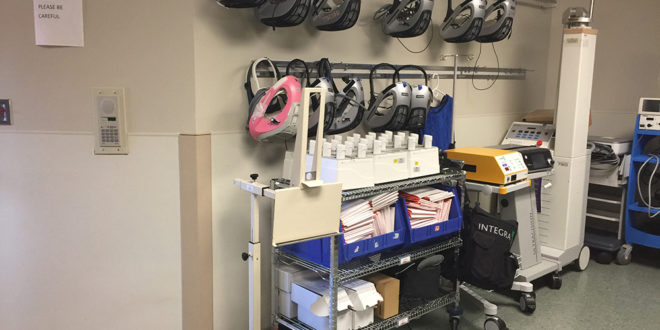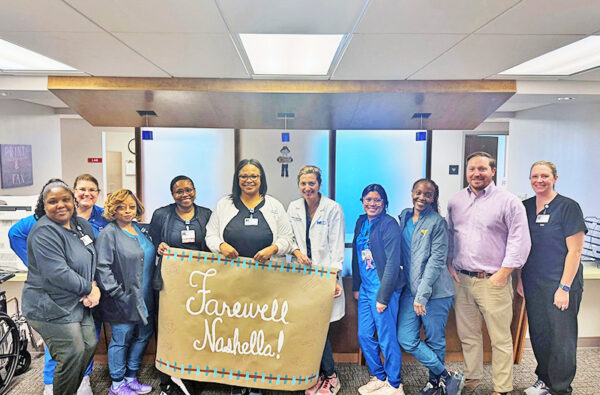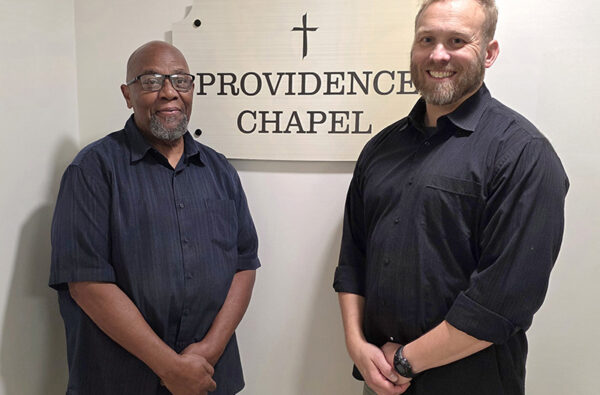Fifteen KATA boards in a hospital with just 300 employees is impressive, and according to Baptist Collierville Chief Administrative Officer Lindsay Stencel, it’s all about doing the “right” thing.
“From the start, we wanted to make sure our KATA work aligned with our strategic goals and our ‘Right’ pillars,” said Lindsay. “It all began with a nursing KATA focusing on patient experience and safety. The goal was to reduce the time it takes for a nurse to respond once a patient pushes a call light button. The original time was 22 to 15 minutes. The team was able to reduce this to three minutes, which helped raise the HCAHPS score on nursing response from the 25th to the 95th percentile. This success really jumpstarted our KATA efforts.”
 Another KATA board focusing on Right Time involves the surgery department, concerning turnaround times between surgery cases. “Literally this is the time it takes from completion of a case to having the operating room ready for the next patient,” said Lindsay. “We ended fiscal year 2016 at 21 minutes, with a goal of 18 minutes for fiscal year 2017.”
Another KATA board focusing on Right Time involves the surgery department, concerning turnaround times between surgery cases. “Literally this is the time it takes from completion of a case to having the operating room ready for the next patient,” said Lindsay. “We ended fiscal year 2016 at 21 minutes, with a goal of 18 minutes for fiscal year 2017.”
Those three minutes can be huge. “There’s a domino effect,” she says. “Start the first surgery on time, stay on schedule, the surgeons will be on time, you don’t have to hold cases, and you can handle more volume with less overtime.” In the past year, the team has:
- Cut the turnaround time to 18 minutes (the team continues work toward a goal of sustaining 18 minutes)
- Cut overtime in half
- Increase the percentage of the first case starting on time from 70 to 85 percent
“And we did this with a 3 percent increase in volume since last year,” said Lindsay. To achieve these results, the team focused on several areas:
OR setup/Storage:
“Our storage area was cluttered, requiring too much time to find things,” said Lindsay. “We used the Lean tool of SS—Sort, Set to Order, Shine, Standardize and Sustain—and were blown away by how much time we could shave off between complex cases.”
- Sort: Added a second storage location for items not routinely used. Removed what did not need to be stored in either area.
- Set to order: Conducted an ergonomic flow analysis, placing the heaviest items at the front of the room, as well as analyzing the use of each piece of equipment.
- Shine: Everything was cleaned and in order.
- Standardize: Labeling and color-coding, with a future plan to place tape on the floor to ensure proper equipment placement.
- Sustain: Prior to each day’s first surgery, the head nurse or circulator checks to be sure everything is in its place and ready.
Standardization of roles
Studied the most efficient (fastest) team members and developed a work flow for others to follow.
Medication cabinets
Examined why staff were waiting in line to obtain the meds for their cases. Worked with the pharmacy to have specific meds in specific drawers so they can be quickly obtained. “This shaved more time off and also reduced stress for our team members,” said Lindsay.
It’s not just clinical areas that are pursuing KATA boards. Housekeeping is working on reducing response time on patient room turnaround. “This is part of our patient flow initiative so we always have beds available,” said Lindsay. “Their goal is to have a room cleaned and ready for the next patient within 30 minutes.” The team is in the early stages, but already has reduced the time from 100+ minutes to 46.
“In all our KATA work, we will continue to monitor and improve,” says Lindsay. “We are very excited about what we can achieve.”






